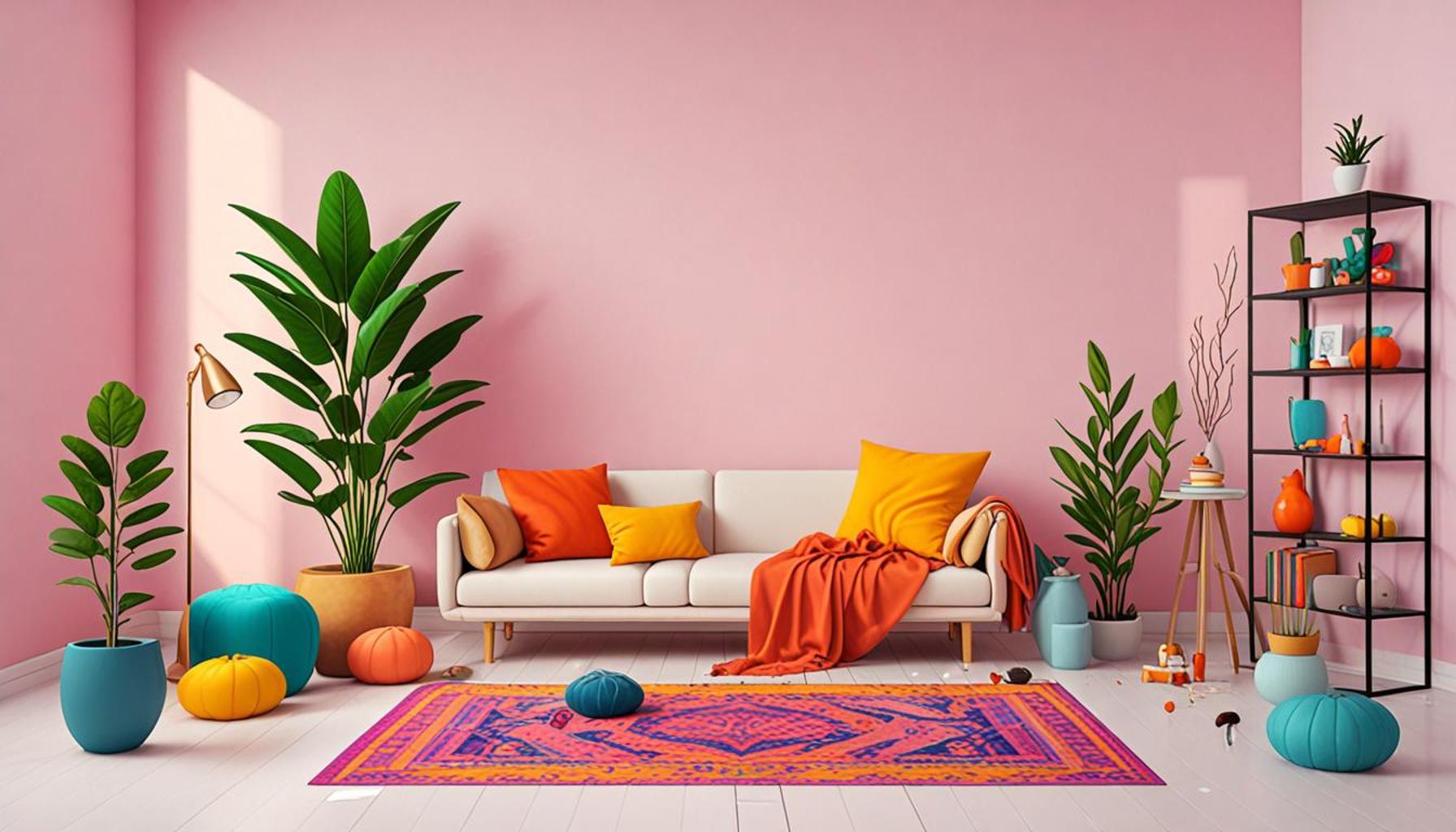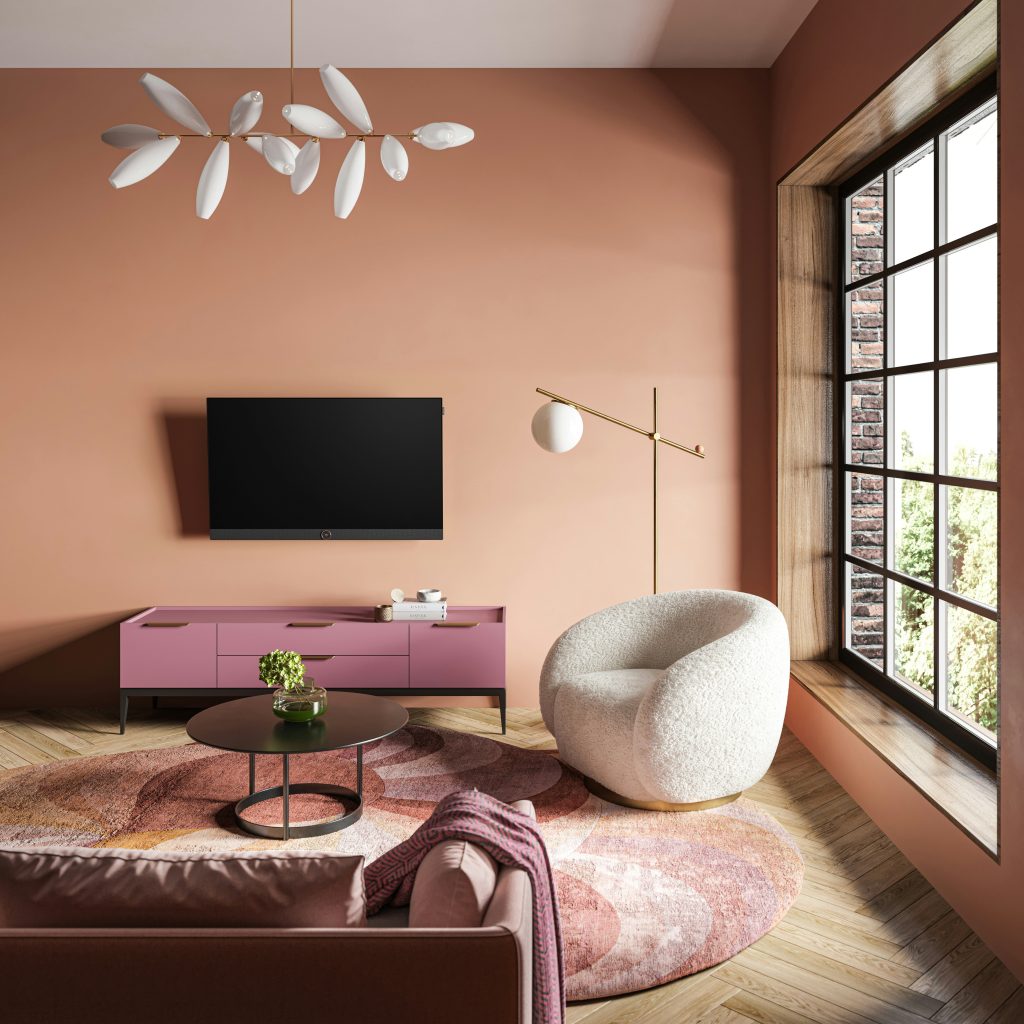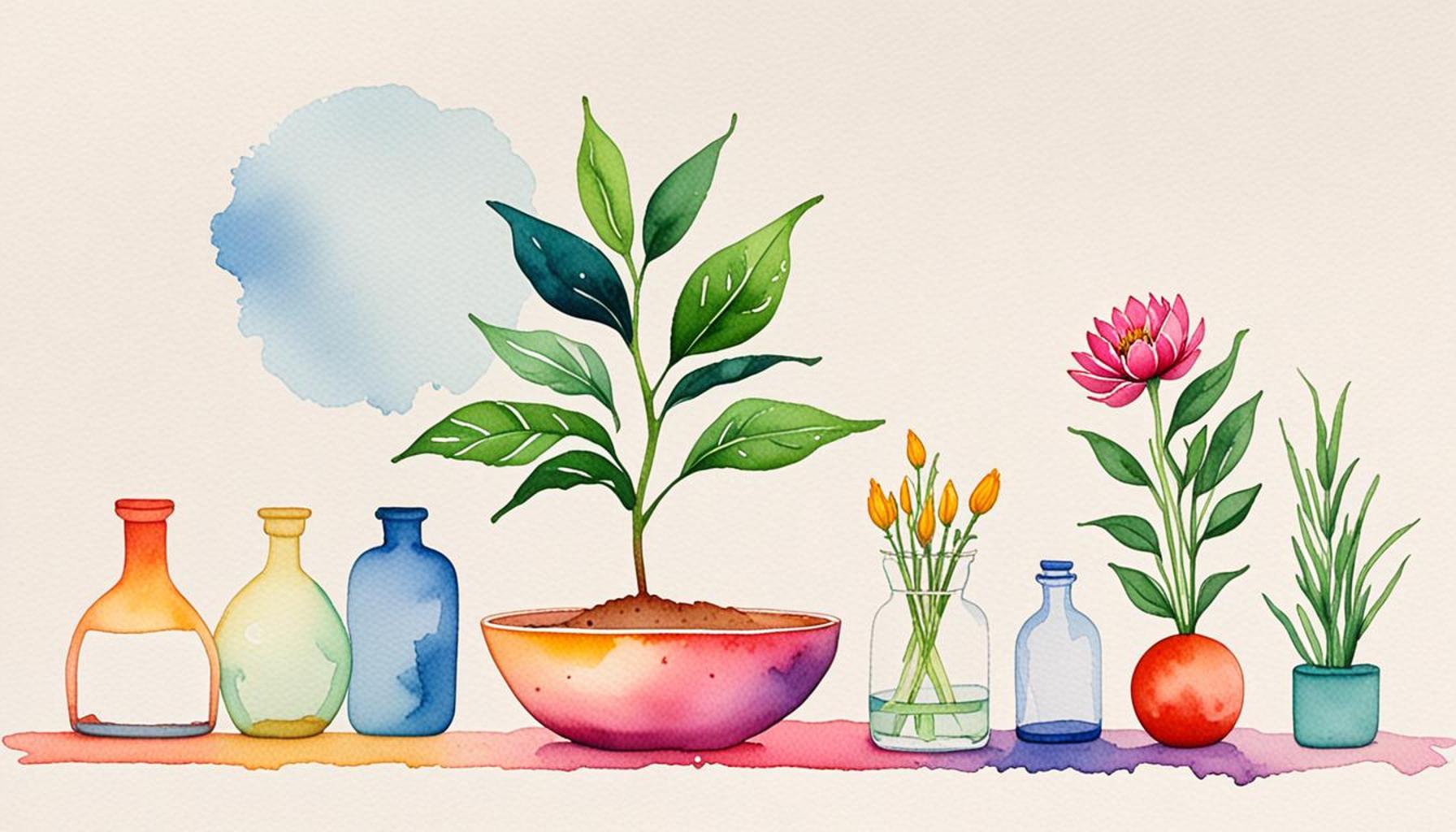Mindful Living and Minimalism: Creating Spaces that Reflect the Inner Self

Understanding Mindful Living and Minimalism
In a world often cluttered with distractions and excess, the concepts of mindful living and minimalism offer a refreshing approach to life. These practices engage individuals in the thoughtful evaluation of their surroundings and prompt conscious choices regarding their possessions. The goal is not just to declutter physical spaces but to create an intentional way of living that fosters peace and clarity.
The Transformative Power of Mindful Living
Consider how mindful living has the potential to transform your space:
- Clutter Reduction: Reducing physical items can lead to decreased stress levels and increased mental clarity. Studies have shown that excessive clutter can contribute to anxiety, making it harder to focus and relax. By minimizing distractions, individuals often find that their minds are less cluttered, allowing for greater productivity and creativity in daily tasks.
- Intentional Design: Each item in your environment should either serve a purpose or bring joy. This principle, often championed by advocates of minimalism, suggests that when individuals curate their possessions, they cultivate a space that truly resonates with them. For instance, instead of filling your home with trinkets acquired out of obligation, consider surrounding yourself with art that inspires you or books that expand your knowledge.
- Inner Reflection: When your space reflects your values and aspirations, it creates a sanctuary that promotes peace. This process encourages individuals to reflect on what truly matters, helping them align their living spaces with their personal ethos. Whether it’s a cozy reading nook filled with beloved books or a serene meditation corner, these spaces can significantly enhance one’s well-being.
Benefits of Embracing Minimalism
Embracing the philosophies of mindful living and minimalism allows individuals to create not only physical spaces but also a mental environment that nurtures growth, creativity, and well-being. Research indicates that adopting a minimalist lifestyle can improve focus and enhance emotional stability, making it especially relevant in today’s fast-paced society. This is crucial in a culture where distractions abound—whether from our devices or the clutter of modern life.
As we delve deeper into the principles of mindful living and minimalism, we’ll explore how to design your spaces to align with your inner self. This journey includes practical tips on decluttering, suggestions for mindful purchases, and inspiring examples from individuals and families who have successfully made this transition.

Ultimately, the choice to live mindfully and minimally is about prioritizing what truly enriches life and fostering an environment where both peace and creativity can flourish. Whether you are just beginning to explore these concepts or looking to deepen your practice, gaining insights into mindful living can change how you perceive not just your physical space, but your overall quality of life.
DISCOVER MORE: Click here to learn how digital automation can simplify your life
Designing Your Space: Steps Toward Mindfulness and Minimalism
Creating a space that reflects your inner self requires thoughtful consideration and an intentional approach. As the principles of mindful living and minimalism intertwine, they provide a foundation that can transform not only your environment but also your overall mindset. Here are some steps to guide you in the journey of designing a space that fosters mindfulness, tranquility, and authenticity:
1. Start with a Clean Slate
The journey begins with decluttering. To make space for what truly matters, consider going through your belongings with a discerning eye. Ask yourself:
- Does this item serve a purpose in my daily life?
- Does this item bring me joy or enhance my well-being?
- Am I keeping this out of obligation or sentimentality?
By answering these questions, you can identify items that can be donated or discarded, allowing for a more organized and peaceful environment. This process not only helps in reducing physical clutter but also promotes emotional clarity.
2. Embrace Meaningful Design Choices
With clutter cleared, it’s time to curate your space with intention. Focus on meaningful design choices that resonate with your personal values. Here are a few strategies to keep in mind:
- Choose Quality Over Quantity: Invest in fewer but high-quality pieces that will last longer and serve you well. Whether it’s furniture, art, or decor, select items that you truly love.
- Incorporate Natural Elements: Bring the outside in by integrating natural materials like wood, stone, and plants. These elements can foster a connection to nature and enhance the calming atmosphere.
- Color Palette: Consider the colors that make you feel at ease. A soothing palette of neutral colors or soft tones can create a serene environment conducive to relaxation and reflection.
3. Create Purposeful Spaces
As you design your environment, think about how different areas can serve specific purposes. For instance, if reading is a cherished pastime, carve out a dedicated nook filled with comfortable seating and ambient lighting. Alternatively, create a meditation area adorned with soft cushions and calming decorations. Spaces designed with intention can reinforce routines and foster mindfulness in everyday living.
4. Regularly Reassess and Adjust
Minimalism is not a one-time effort; it’s an ongoing practice. Regularly reassess your space to ensure it continues to mirror your evolving self. Take the time to evaluate any new items that have made their way into your home and whether they are still aligned with your values and goals. This continual process encourages a deeper relationship with your belongings and the spaces you inhabit.
By implementing these steps, you not only create a physical space that is less cluttered but also cultivate a profound sense of clarity and peace within. Mindful living and minimalism invite you to reshape how you engage with your environment, ultimately leading to a more fulfilling and intentional lifestyle.
| Advantage | Description |
|---|---|
| Enhanced Clarity | Mindful Living allows individuals to achieve mental clarity by decluttering physical spaces, leading to a more organized and serene environment. |
| Emotional Well-Being | Creating minimalist spaces fosters a sense of calm, reducing anxiety and promoting emotional stability. |
The concept of Mindful Living and Minimalism is increasingly resonating with those seeking to create environments that embody their inner values and aspirations. By embracing an uncluttered lifestyle, individuals can find that their home spaces become true reflections of their self-discovery journey. As you explore the practice of minimalism, you learn to appreciate the essentials, thereby enhancing your overall mental clarity. The act of removing excess belongings can sharpen focus and increase productivity. Additionally, spaces filled with only those items that hold personal significance can lead to a greater emotional connection with the environment around you.This path encourages you to take a closer look at what you surround yourself with, leading to a profound, transformative experience that elevates both your home and your soul. Each room can become a sanctuary that promotes tranquility and mindfulness, ultimately guiding you to better understanding yourself and your needs.
DISCOVER MORE: Click here to find out how minimalism can change your space
Integrating Mindfulness into Daily Practices
As you continue to design your space with mindfulness and minimalism in mind, it’s essential to integrate these principles into your daily practices. Mindful living isn’t solely about the physical environment; it extends into how you interact with your surroundings each day. Here are strategies to seamlessly incorporate mindfulness into your routines:
1. Establish Daily Rituals
The formation of daily rituals can anchor your day while fostering a sense of purpose and intentionality. Consider starting your morning with a brief meditation or a few moments of gratitude to set a positive tone. Rituals need not be elaborate; even a simple cup of tea enjoyed in silence can be a powerful act of mindfulness. Recognizing and honoring these daily rituals can create a rhythm in your life that reflects your minimalist values.
2. Mindful Consumption
Beyond your physical space, practice mindful consumption. In a world inundated with advertisements and quick accessibility to goods, it’s easy to accumulate unnecessary items. Before making any purchase, ask yourself:
- Will this enhance my life or contribute positively to my well-being?
- Do I truly need this, or am I being influenced by external factors?
- How will this item align with my values and the space I am cultivating?
This conscious decision-making process can lead to more thoughtful acquisitions that serve your needs, reducing waste while maintaining a harmonious living space.
3. Foster Connections with Nature
Integrating elements of nature into your daily life can deepen your mindfulness practice. Nature has an incredible ability to ground us, providing a source of tranquility amidst the chaos of modern life. If possible, spend time outdoors each day, whether that means taking a walk in a nearby park or simply sitting on your balcony listening to the sounds of the breeze. If outdoor access is limited, consider adding natural elements like plants or even water features indoors to imbue your space with life and serenity.
4. Create a Mindful Technology Space
In today’s digital age, technology is a constant presence, both enhancing and hindering our ability to live mindfully. To maintain a balanced relationship with technology, create a designated tech-free zone in your home. This area can be a place for reflection, conversation, or reading—free from screens and distractions. Including intentional breaks from technology in your daily practices encourages you to reconnect with yourself and your surroundings.
5. Journaling for Self-Reflection
Incorporating journaling into your daily routine can facilitate self-reflection, allowing you to dive deeper into your thoughts and feelings. It acts as an avenue for processing emotions and experiences while promoting mindfulness. Allocate time each day to write about your intentions, acknowledge what brings you joy, and explore your evolving self. Over time, this practice cultivates clarity and breeds a greater understanding of your true desires.
While designing a mindful and minimalist space serves as a powerful foundation, it is the daily practices that nurture and sustain the intention behind that space. By integrating these habits into your routine, you reinforce your commitment to creating an environment that not only reflects your inner self but also enriches your overall well-being. Embrace the journey of mindful living by fostering an atmosphere of simplicity, purpose, and reflection. Each step taken in this direction brings you closer to a life that resonates with authenticity and peace.
DISCOVER MORE: Click here to delve into mindfulness and decision-making.</
Conclusion: Embracing Authenticity Through Mindful Living
In a fast-paced world filled with distractions, mindful living and minimalism offer a refreshing pathway to create environments that resonate with our true selves. By thoughtfully curating our spaces and integrating mindful practices into our daily routines, we not only cultivate tranquility but also unlock the potential for deeper connections with ourselves and our surroundings. Reflecting on our choices—be it through the establishment of daily rituals, mindful consumption, or fostering relationships with nature—serves to enhance our overall well-being.
The journey toward a mindful existence is both personal and transformative. Our living spaces, when intentionally simplified, become powerful reflections of our values and aspirations. By embracing concepts such as mindful technology use and self-reflection through journaling, we further harness our ability to create a life marked by authenticity and clarity. Each mindful choice paves the way for a deeper understanding of what brings joy, peace, and satisfaction.
Ultimately, the practice of mindful living and minimalism is not merely about the physical spaces we inhabit, but rather, about the internal landscapes we cultivate. As we declutter our homes, we simultaneously declutter our minds, leading us to a state of inner harmony. In this way, we can navigate the complexities of modern life with resilience and grace, ensuring that our surroundings genuinely embody our inner selves. As you embark on this transformative journey, consider how each step will lead to a more meaningful, intentional existence—one where your space truly reflects who you are.



